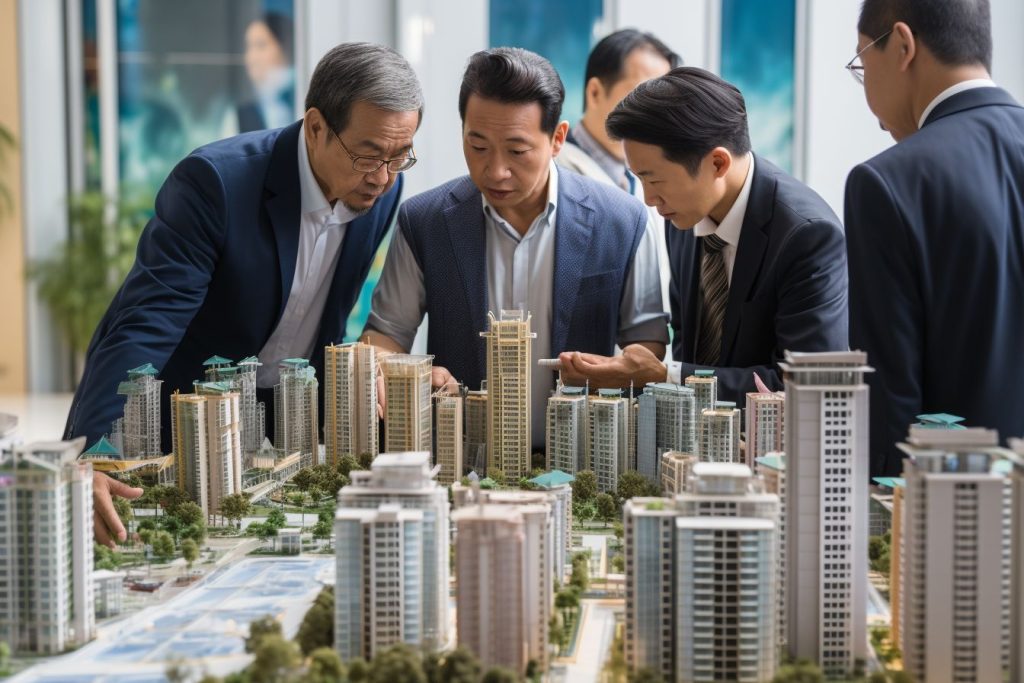Navigating the world of commercial roofing can be daunting, especially when choosing the right system for your property. Did you know that there are countless types of roofs and materials used in commercial roofing today? This article will guide you, unravelling everything from understanding different roofing systems to key maintenance practices.
Get ready to become a pro at deciphering commercial roofing!
Key Takeaways
- Commercial roofing systems include Built-Roofing (BUR) Membrane, Metal Roofing, Modified Bitumen Roofing, and Thermoset or EPDM Roof.
- Common issues with commercial roofs include water stains, mould growth, leaks, damage to flashing, and seam gaps.
- Regular roof inspections and maintenance are essential to prevent costly damages and extend the lifespan of commercial roofs.
Understanding Commercial Roofing Systems
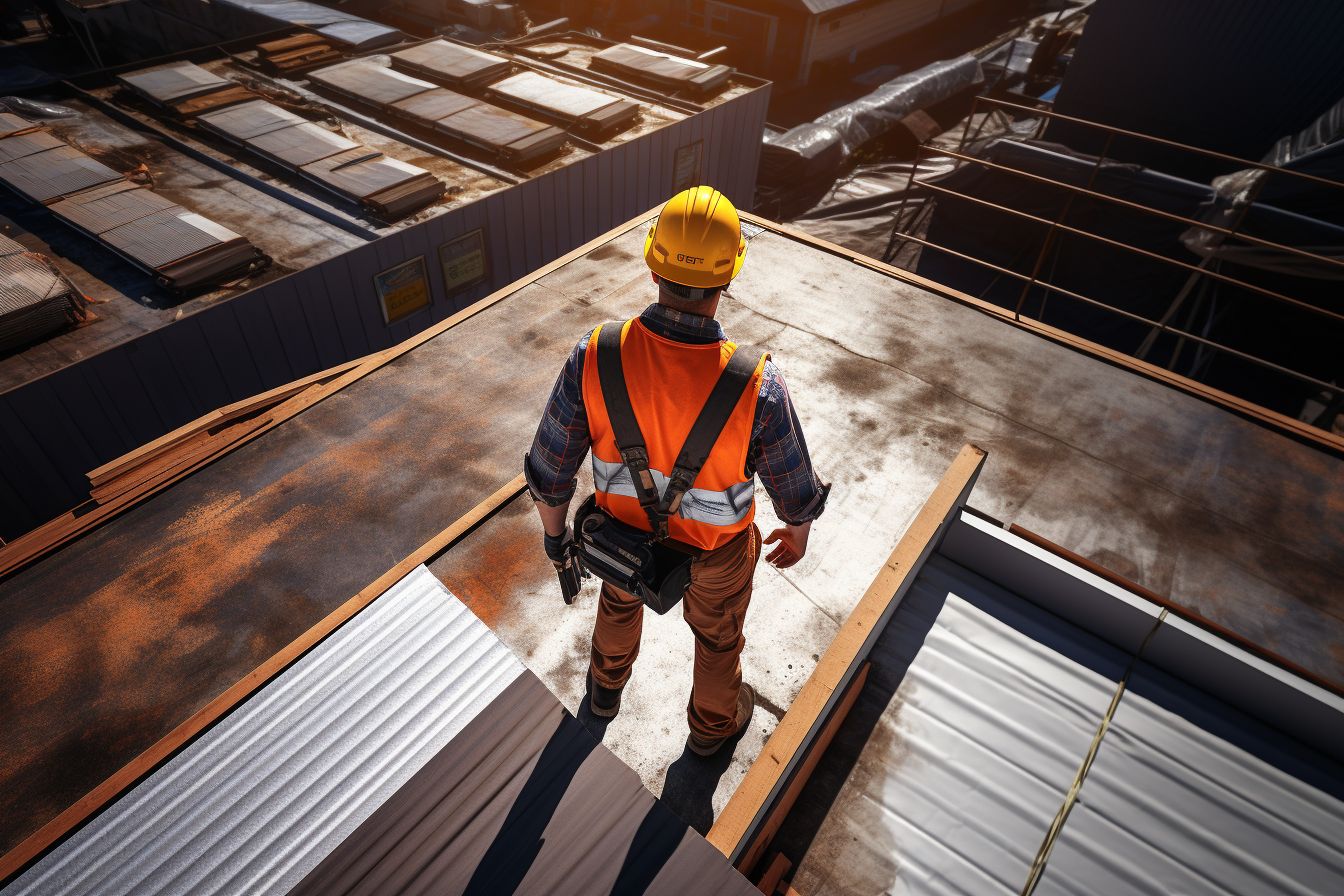
Commercial roofing systems encompass various types of roofs, the materials used in their construction, and the advancements in modern technology that contribute to their durability and longevity.
Different types of commercial roofing systems
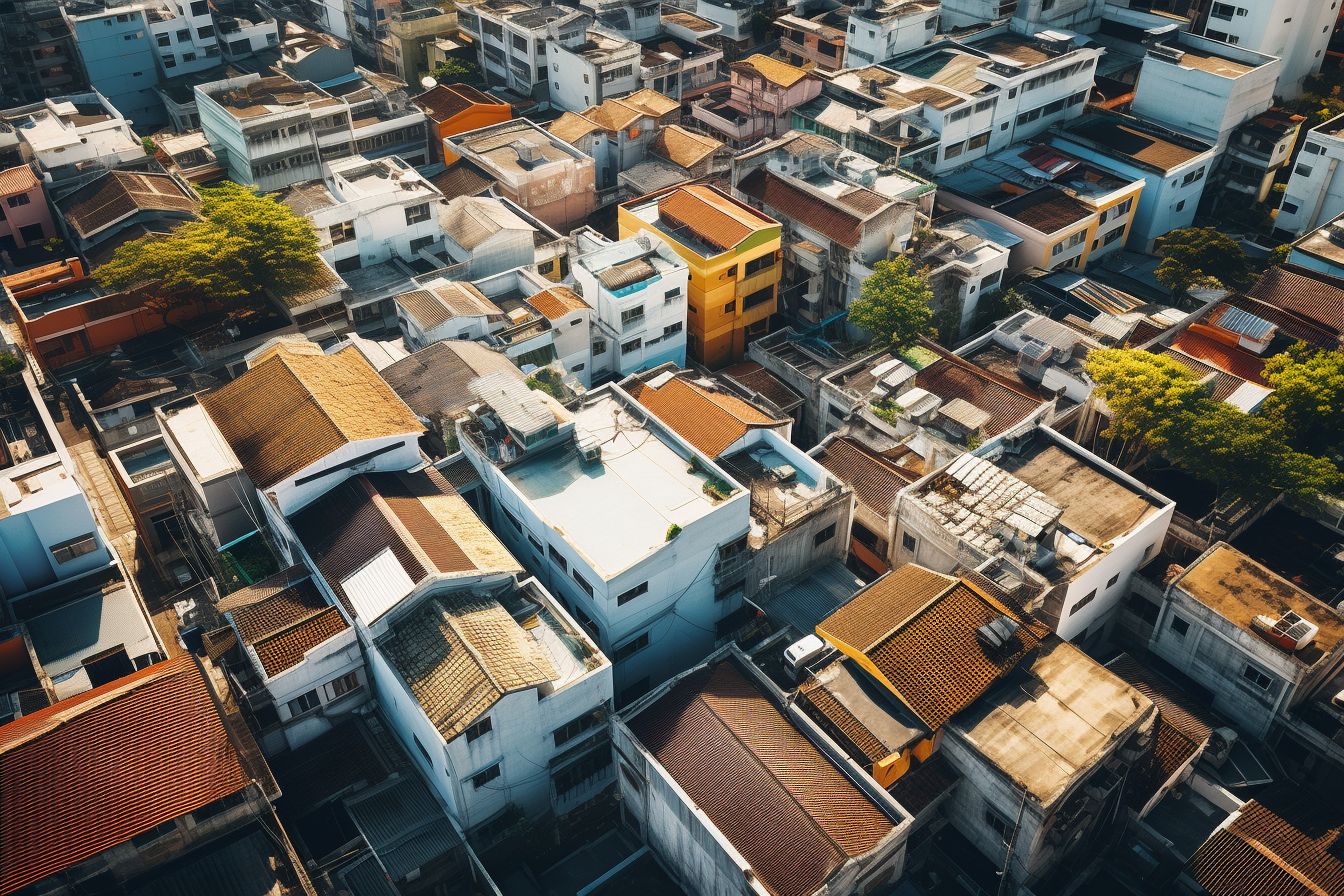
Commercial roofing systems come in various types, each suited to different building requirements and budgets. Built-up roofing or BUR Membrane is a durable option with multiple layers for added protection.
Metal roofing, both lightweight and strong, offers high resistance to the elements. Modified Bitumen Roofing incorporates asphalt for increased flexibility and strength, while Thermoset or EPDM roof membrane provides a robust seal against weather extremes.
Today’s popular choice among businesses is the TPO (Thermoplastic Polyolefin) system, known for its energy efficiency. Asphalt Shingle Roofing affords variety in style alongside durability, whilst Liquid Roofing allows efficient waterproof coverage by conforming to all shapes and angles of a roof surface.
Finally, Green roofing presents an eco-friendly solution aimed at reducing environmental impact but also brings extra insulation benefits along with it!
Materials used in commercial roofing
Commercial roofing systems rely on a variety of installation materials. Due to their strength and reliability, single-ply materials such as TPO, PVC, and EPDM are common. TPO (thermoplastic olefin) stands out among its peers for its durability, energy efficiency, and ease of installation.
This makes it an ideal material for many commercial buildings.
Low-slope metal roofs also comprise a significant part of the commercial roofing landscape. Materials like corrugated galvanized steel, copper, aluminium, stainless steel, and tin serve this industry well, thanks to their resilience against harsh weather conditions.
Manufacturers like GAF provide other options, too, including polyiso insulation and different roof coatings. These give each system added protection while bolstering the longevity and safety concerns crucial in any commercial building setup.
Modern technology in commercial roofing
Commercial roofing is experiencing a major revolution thanks to modern technology. The industry now boasts advanced materials such as TPO single-ply roofing membranes that bring durability and efficiency.
These new-age commercial roofing systems are designed for optimal performance, like modified bitumens, sprayed polyurethane foam, metal panels, and reinforced liquid-applied roof systems.
They’re crafted specifically to rectify issues common with flat roofs. The continuous evolution in technology aims at extending the lifespan and significantly improving all aspects of commercial roofs.
Technology is essential in energy-efficient roofing solutions and triggers further innovation within this critical construction sector.
Selecting the Right Commercial Roofing System
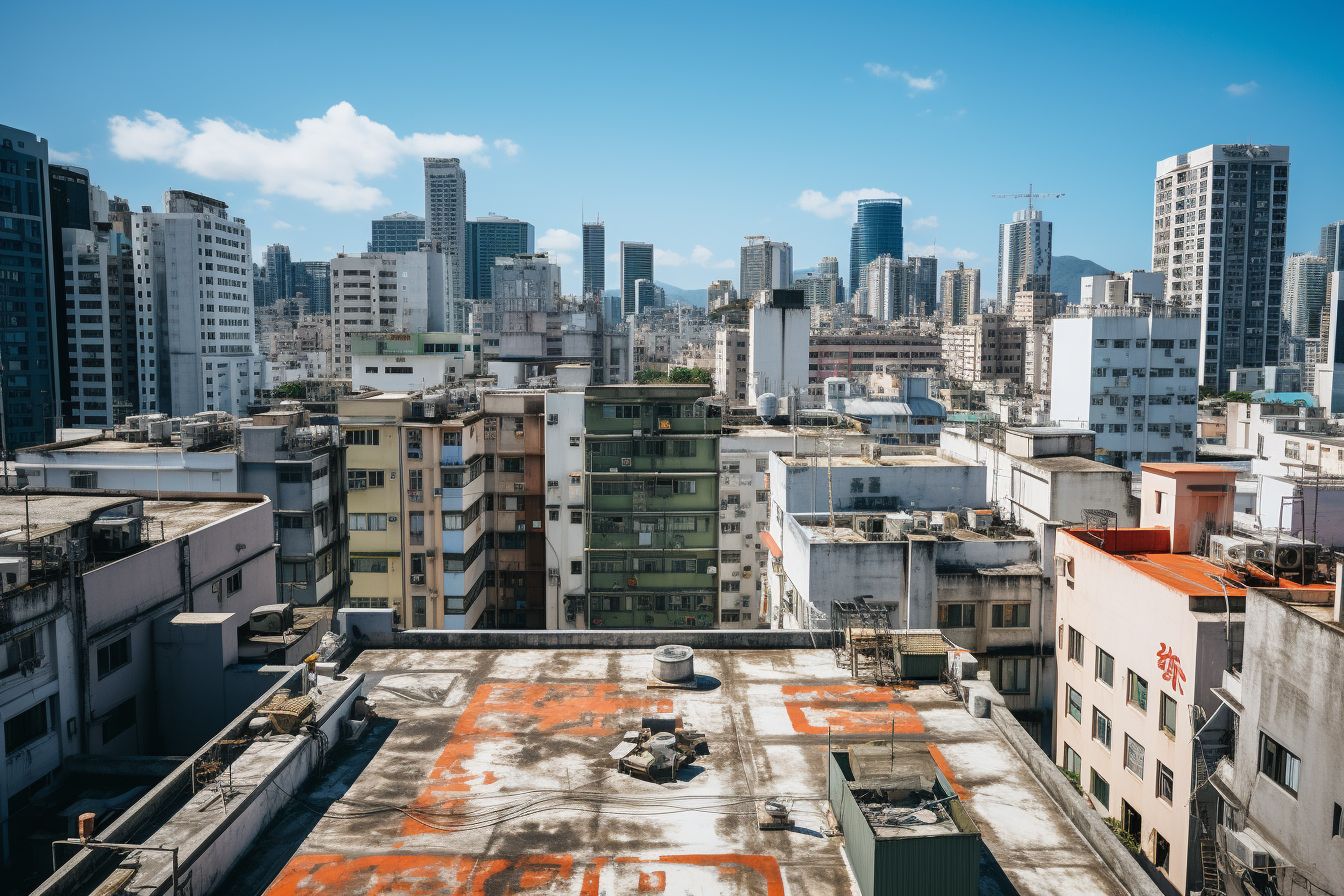
When choosing a commercial roofing system, it is important to consider factors such as the shape and slope of the roof. Additionally, various popular options are available for commercial roofs to suit different needs and budgets.
Factors to consider when choosing a roofing system
Consider several key factors when choosing a roofing system for your commercial building. First, take into account the physical location of the building and any local building codes that may dictate certain requirements.
Additionally, consider nearby hazards such as trees or high winds that could impact the roof’s durability. Second, evaluate the dimensions and shape of the roof itself to determine which roofing system will be most suitable.
Third, think about the physical make-up of the building itself and how different materials and designs may work better with certain structures. Finally, carefully review all details of each roofing system you are considering, including warranties and maintenance requirements.
Evaluating the shape and slope of the roof
The shape and slope of the roof play a crucial role in determining the most suitable roofing system for a commercial building. The shape of the roof can impact the installation process and overall performance of the chosen system.
For instance, flat roofing systems are commonly used for buildings with low-slope roofs, while pitched roofing systems work best for structures with steep-slope roofs. Additionally, the slope of the roof is essential for proper water drainage.
A flat or low-slope roof may require additional measures to ensure effective water runoff. By evaluating these factors, it becomes possible to determine if any structural modifications or extra materials are needed to achieve an optimal roofing solution that meets functional and aesthetic requirements.
Popular commercial roofing systems
Built-Up Roofing (BUR) Membrane, Metal Roofing, Modified Bitumen Roofing, Thermoset or EPDM Roof, Single Ply Membrane, and Seamless Elastomeric Coating are some of the popular commercial roofing systems.
Each system has its advantages and disadvantages depending on factors like budget, building type, climate, and desired lifespan. For instance, Built-Up Roofing (BUR) Membrane comprises multiple layers of tar and gravel or asphalt.
On the other hand, Metal Roofing is known for its durability and long lifespan. Another option is Modified Bitumen Roofing, which combines the benefits of built-up and single-ply roofing in a hybrid system.
Maintenance and Care for Commercial Roofs
Regular inspection and maintenance are essential for commercial roofs to prevent potential issues. From identifying leaks to addressing common roofing problems, knowing how to care for your roof can save you significant costs in the long run.
Keep reading to learn more about proper maintenance techniques and common repairs for commercial roofs.
Regular roof inspection and maintenance
Regular roof inspection and maintenance are crucial for the care and longevity of commercial roofs. To ensure durability, it is recommended to schedule detailed inspections at least once a year.
These inspections help identify potential problems early on, allowing for prompt repairs and preventing costly damages. Additionally, having a smart and consistent roof maintenance plan includes routine upkeep and promptly addressing repairs.
Property owners should consider scheduling commercial roof inspections at least twice a year to stay proactive in maintaining the integrity of their roofing system. By conducting regular inspections and staying on top of necessary maintenance tasks, commercial property owners can protect their investment and extend the lifespan of their roofs while avoiding expensive repair bills down the line.
Common issues and repairs
Regular maintenance and care for commercial roofs are essential to prevent common issues and the need for repairs. Some of the most common issues with commercial roofs include water stains on the ceiling, mould growth, bugs or pests, visible leaks, damage to flashing, seam gaps, and material warping.
These problems can be caused by various factors, such as ageing materials, weather exposure, lack of maintenance, or poor installation. However, they can typically be identified through a thorough roof inspection that examines problem areas like roof membranes, decking, vents, flashing, and gutters.
Regarding repairs for commercial roofs, several common issues may need attention. Roof leaks are one of the most prevalent problems due to damaged roofing materials or faulty seams.
Ponding water is another issue frequently encountered on flat roofs where water accumulates instead of draining properly. Punctures and tears in the membrane can also lead to leaks if left unaddressed.
Damage to flashing is another repair often required since it protects vulnerable areas like vents and chimneys from water intrusion. Other issues, such as blistering due to trapped moisture within roofing materials or membrane shrinkage over time, may also require professional repairs.
In conclusion,
Cost of commercial roofing services
Commercial roofing services can vary in cost depending on the specific needs of your roof. On average, repairs for commercial roofs can range from $4 to $10 per square foot, while overall repair costs can range from $150 to $7,000.
However, it’s important to note that the cost of commercial roof replacement will depend on various factors, such as the size of the roof, the type of materials used, and any additional services required.
Proper maintenance and care are key to preventing costly repairs in the future.
Hiring a Professional Commercial Roofing Contractor

Hiring a professional commercial roofing contractor is essential to ensure the quality and longevity of your roof.
The importance of hiring a professional
Hiring a professional commercial roofing contractor is of utmost importance to ensure that the job is done right. These experts possess valuable knowledge and expertise in commercial roofing, allowing them to handle the project efficiently and effectively.
Not only can they save clients money by procuring materials at discounted rates and working within budget, but they are also well-versed in building codes and regulations related to commercial roofing.
Hiring a reliable contractor can complete any repair or replacement work on a commercial roof without any legal or safety issues arising.
How to find the right contractor
Finding the right contractor for your commercial roofing project is crucial to ensure a successful and high-quality outcome. Start by requesting recommendations from neighbours or your Homeowner Association (HOA).
It’s also important to check the reputation of potential contractors through online reviews or references from past clients. Additionally, consider industry certifications, as these demonstrate that the contractor has met certain standards and possesses the necessary expertise.
Ensure the contractor is licensed and follows all relevant regulations and laws, including safety standards. Prioritize contractors with a valid license and insurance to protect yourself in case of any damages or liabilities during the project.
Getting a professional estimate
Roofing companies understand the importance of providing their customers with accurate estimates for commercial roofing projects. These professionals can deliver a reliable cost estimate by assessing the scope of work and materials needed.
They consider factors such as labour, materials, and any additional services required to complete the project successfully. This detailed estimate ensures that you clearly understand the financial commitment involved in your commercial roofing project before making any decisions.
Make sure to request a written proposal that outlines all aspects of the job, including warranties and guarantees provided by the contractor. This way, you will have peace of mind knowing exactly what to expect regarding pricing and quality.
Conclusion
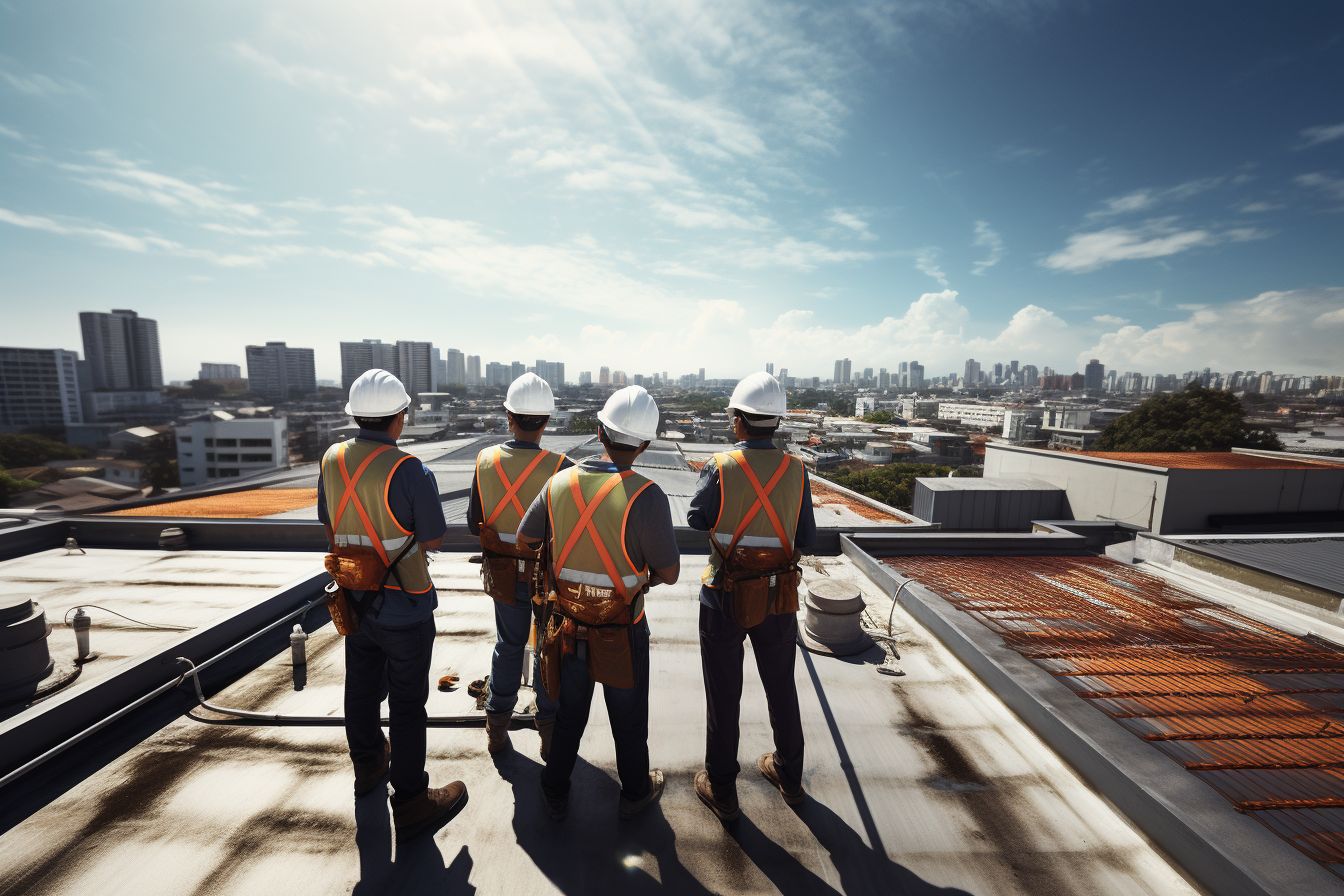
In conclusion, this complete guide to commercial roofing provides everything you need to know about selecting the right roofing system, maintaining your roof, and hiring a professional contractor.
It covers various types of roofs, materials used, common issues, and cost considerations. With this comprehensive resource, you can make informed decisions about your commercial roofing needs.
FAQs
1. What are some commercial roofing materials I can choose from?
Commercial roofing materials include metal, TPO, and EPDM rubber.
2. How should I maintain my commercial roof?
Regular maintenance for your commercial roof includes checking for signs of damage, fixing leaks promptly, and ensuring proper safety measures are enforced during repair or installation.
3. Is Commercial roofing costlier than residential roofing?
Typically, the cost of Commercial Roofing is higher due to the size, complexity and specific material used than residential roofs.
4. Does weather impact the lifespan of a commercial roof?
Yes! Weather can significantly affect the lifespan and performance of your commercial roof, making choosing weather-resistant materials vital in installation.

